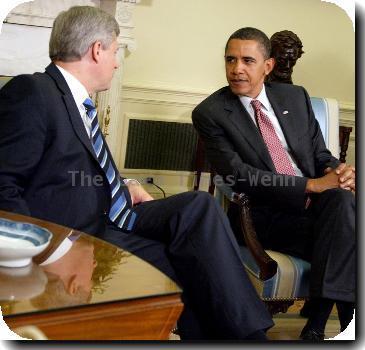Recovery likely strengthening after 3rd quarter ends up weaker than expected; home sales gain
By Jeannine Aversa, APTuesday, December 22, 2009
Recovery likely strengthening after weaker 3Q
WASHINGTON — All signs suggest the economic recovery will end the year on firmer footing despite a report Tuesday that the economy grew at a 2.2 percent pace in the third quarter, less than previously thought.
The Commerce Department’s new reading on gross domestic product for the July-to-September quarter was weaker than the 2.8 percent growth rate estimated a month ago. Economists had predicted this figure would remain the same in the final estimate of the quarter’s GDP — the value of all goods and services produced in the United States.
The main factors behind the downgrade were that consumers didn’t spend as much, commercial construction was weaker, business investment in equipment and software was softer and companies cut back more on their stockpiles of goods.
Even so, the economy managed to return to growth during the quarter, after a record four straight quarters of decline. That signaled that the deepest and longest recession since the 1930s had ended and the economy had entered a new fragile phase of recovery.
And many analysts still think the economy is on track for a better finish in the current quarter. One sign was a separate report Tuesday that home resales surged last month to their highest level in nearly three years, thanks to an extraordinary level of federal support. The report added to evidence that the housing market, which led the country into recession, is on the mend.
That gave a boost to stocks on Wall Street. The Dow Jones industrial average gained nearly 51 points, or about 0.5 percent. Broader stock averages also rose.
The economy is probably growing at nearly 4 percent in the October-to-December quarter, analysts say. A few peg it closer to 5 percent. If they’re right, that would mark the strongest showing since 5.4 percent growth in the first quarter of 2006 — well before the recession began. The government will release its first estimate of fourth-quarter economic activity on Jan. 29.
Growth in the final quarter is expected to be driven mainly by companies restocking depleted inventories. Stocks of goods were slashed at a record pace during the recession. So even the smallest pickup in customer demand will force factories to step up production and boost overall economic activity in the final quarter.
Stronger sales of exports to foreign customers, as well as spending by U.S. consumers and businesses, also will help underpin fourth-quarter growth.
“We expect a better performance in the fourth quarter, but the core problems for the economy — bust banks and a massively overleveraged consumer — have not gone away,” said Ian Shepherdson, chief economist at High Frequency Economics.
That’s why many economists predict growth will slow to a pace of around 2 or 3 percent in the first three months of 2010. Consumers are likely to stay frugal. And the big lift from inventory restocking isn’t expected to last.
With unemployment high and credit tight, growth won’t likely be as energetic as in the early phases of previous recoveries. The unemployment rate, now at 10 percent, is expected to remain high.
The economy has been on a wild ride this year. In the first three months, it shrank at a pace of 6.4 percent — its worst slide in 27 years. The recession eased in the second quarter, with the economy dipping at a pace of just 0.7 percent. The economy returned to growth in the third quarter.
Much of the third quarter’s growth was supported by government stimulus spending. The Cash for Clunkers rebates and a tax credit for first-time home buyers buoyed sales of cars and homes. The clunkers program ended in August, though the tax credit has been extended and expanded beyond first-time buyers.
The government makes three estimates of GDP each quarter. Each estimate is based on more complete data. The government’s initial estimate for the third quarter was more energetic, showing the economy’s growth at a 3.5 percent pace. But subsequent estimates showed the recovery was actually slower.
Tuesday’s report showed consumer spending grew at a 2.8 percent pace. That was slightly weaker than the 2.9 percent pace previously estimated and was one of the factors behind the lower overall reading.
Retail sales, though, showed momentum in October and November. That raised hopes that holiday sales would fare better than last year’s season, the worst in nearly four decades.
Still, unlike in previous recoveries, consumers, whose spending accounts for 70 percent of overall economic activity, aren’t expected to power this one alone. Businesses and the government are having to contribute more.
It’s unclear how much the recovery might weaken once the government withdraws stimulus programs put in place to combat the financial crisis and the recession. If consumers pull back on spending, the economy could tip back into recession. Economists at Capital Economics predict the recovery will slow, with the economy’s growth fading to just 1.5 percent in 2011.
Against that backdrop, the Federal Reserve pledged last week to keep interest rates at a record low to help the recovery gain traction.
Faced with the prospects of high unemployment well into the 2012 presidential election year, President Barack Obama wants the government to take further steps to put Americans back to work. The House last week passed some provisions that Obama has pushed to aid job growth. But it didn’t include new tax breaks for small businesses that hire.
The administration credits its $787 billion package of tax cuts and increased government spending with improving employment, though Republicans argue it did not help much.
Tags: Barack Obama, Home Selling, North America, Recessions And Depressions, Residential Real Estate, United States, Us-economy, Washington



